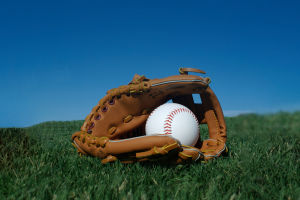Baseball is a complex sport that combines pitching, hitting, and defense, with each element playing a crucial role.
The intricacies and nuances in these aspects make the sport fascinating and remarkable. Here, Lykkers, Let's delve into these details to appreciate the depth of baseball.
First, let's examine the internal structure of a baseball. Have you ever been curious about the inner structure of a baseball? At its core is a cork ball, approximately the size of a ping-pong ball, wrapped in a rubber layer.
Surrounding this core is a thick layer of wool, tightly wound to provide the necessary density and weight. The outermost layer is the familiar leather cover, stitched meticulously. Although aesthetically pleasing, this structure serves more than just a decorative purpose.
It's interesting to note that baseballs used in professional leagues in the United States, Japan, and other countries share a similar construction but have slight variations in size and elasticity.
These subtle differences can significantly impact players' performances, highlighting the importance of even the minutest details in the game.
Next, let's explore the dynamic duel between pitching and hitting. This confrontation is one of the most dramatic and thrilling parts of a baseball game. For instance, when a pitcher throws a ball at a speed of 135 kilometers per hour, it takes merely 0.5 seconds to travel from the pitcher's hand to the home plate.
This brief window demands extraordinary reflexes from the batter. If a batter's swing takes about 0.2 seconds, they only have 0.3 seconds to decide when and how to swing.
Facing pitches that exceed 140 kilometers per hour, combined with precise control and a mix of different speeds and changeups, makes hitting a formidable challenge.
A successful batter must possess not only excellent athletic ability but also exceptional eyesight and reaction speed to make contact with the ball effectively.
In baseball, gloves are crucial tools that vary significantly depending on the player's position. Each type of glove is designed to enhance performance and protect the player, while also subtly indicating the player's role on the field.
1. Pitcher's gloves: These gloves are designed for stealth, allowing pitchers to conceal their grip and prevent opponents from predicting the type of pitch. The gloves are typically closed, with no mesh, to better hide the ball's position and grip.
2. Catcher's gloves: Catchers require gloves with substantial shock-absorbing materials to handle powerful pitches. These gloves are thicker and heavier, with shorter fingers and wider palms, effectively absorbing the ball's impact and protecting the catcher's hands.
3. Infielder's gloves: Designed for quick grip and transfer, infielder gloves vary slightly depending on the position. Second basemen and shortstops use smaller gloves for quick double plays, while first basemen use larger gloves similar to catcher's mitts, designed to catch balls from all directions with ease.
4. Outfielder's gloves: These gloves have longer fingers and a deeper pocket, providing a larger catching area suitable for high fly balls. Outfielders need to move swiftly and judge the ball's trajectory accurately, so their gloves are designed to aid in catching the ball while running.
The interplay of pitching, hitting, and defense in baseball requires not only individual skill but also strategic coordination. Pitchers must continually vary their pitches' speed and style to outwit the batter. Batters need to quickly assess the ball's trajectory and timing to make an accurate swing.
Defenders must react swiftly, catch the ball precisely, and execute quick passes. The seamless coordination of these elements results in a spectacular baseball game, showcasing both physical prowess and strategic thinking.
Baseball is a sport where science and skill intersect at every level. From the meticulous construction of the baseball to the nuanced techniques of pitching and the specialized design of gloves, each aspect reflects the sport's unique charm.
Baseball is not just a test of physical abilities but also a contest of intellect and strategy. By understanding these details, we can gain a deeper appreciation of the sport and the extraordinary moments it creates on the field.


